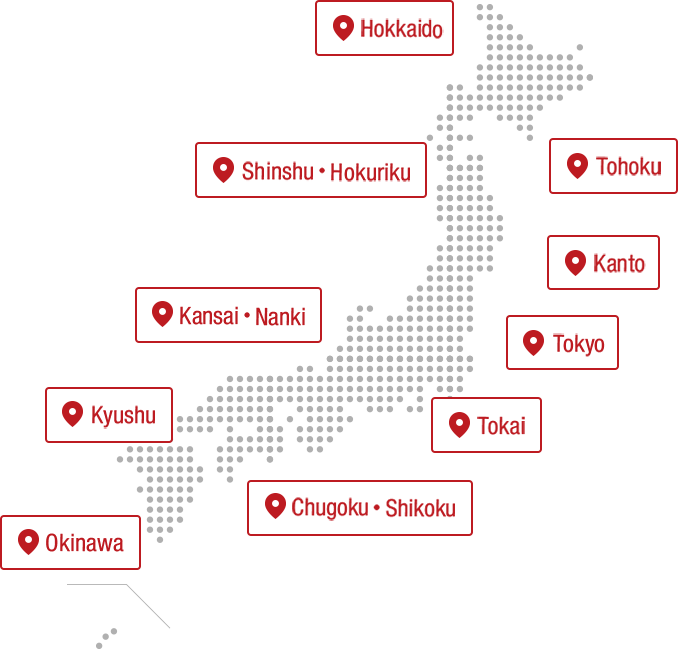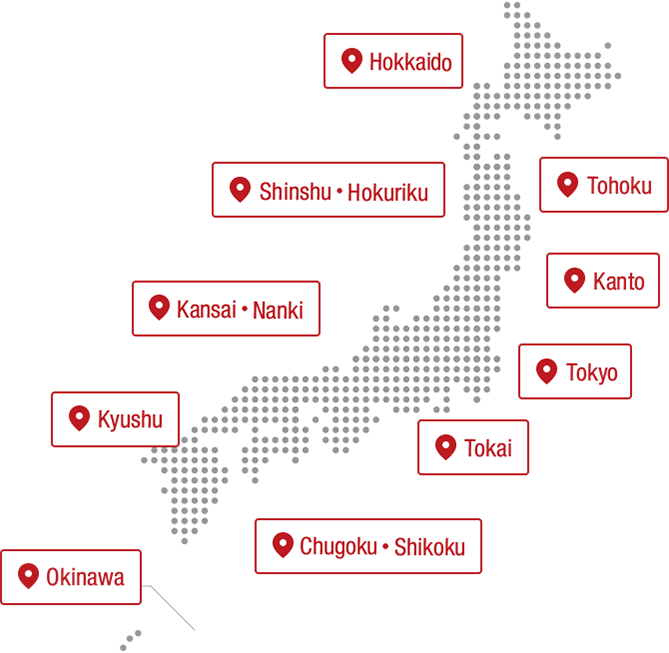INDEX
- Full of things to see! The charms of the Republic of Malta, the "Jewel of the Mediterranean"
- Beautiful traditional crafts that tell the story of Malta's history
- Visit Craft Village, a place where you can encounter traditional crafts
- Rich nature and deep history...Malta itself is packed with traditional crafts
Full of things to see! The charms of the Republic of Malta, the "Jewel of the Mediterranean"
What kind of country is Malta, where so many beautiful crafts are produced?
It takes about 18 hours from Japan with transfers in major European cities. The Republic of Malta, surrounded by the beautiful Mediterranean Sea, is an island nation located just south of Sicily, Italy. It consists of three inhabited islands: Malta, Gozo, and Comino, with a total area of 316 square kilometers. It is about half the size of Tokyo's 23 wards and a little larger than Iriomote Island in Okinawa Prefecture.

A place where you can find different charms in each season
Malta enjoys sunny skies 80% of the year and a pleasant climate throughout the year, but the temperature changes greatly between summer and winter. Malta has a strong image as a southern island resort, and people tend to think of it as a perpetual summer, but it does get quite cold from November to February. Malta is of course attractive in the sun-drenched summer, but we also recommend visiting in the winter, when you can experience the unique European Christmas atmosphere.

Autumn is the most comfortable season, and there are many cultural events taking place during this time. The largest festival, Notte Bianca, is held in the capital Valletta every October. The entire city is lit up and a variety of live shows and performances are held. The Prime Minister's official residence, which is usually closed to the public, is also opened to the public, and cultural facilities such as art galleries and museums can be enjoyed for free.

A country where you can enjoy both natural abundance and modern cities
The Maltese people are proud of their natural abundance. The northwest and southwest of Malta, Gozo and Comino are particularly rich in nature. Comino's Blue Lagoon boasts an astonishingly vivid blue and transparency, and the caves and rocks allow you to experience the island's topography. From spring to early summer, you can enjoy fresh greenery and vibrant flowers.

On the other hand, urban areas such as St. Julian's have an increasing number of stylish cafes, restaurants, and skyscrapers, giving them the atmosphere of a modern resort city. Although it is a compact country, each area has its own unique characteristics, and one of its charms is that you can enjoy both nature and the city.

Experience Malta's long and deep history in the World Heritage city of Valletta
When talking about the appeal of Maltese crafts, it is essential to understand the history behind them. Malta has a very long history, dating back to around 5200 BC, when people migrated from Sicily. Located in the middle of the Mediterranean Sea, it has been a transit point for trade and war, and its history could be described as one of continuous invasions. The culture and technology of Europe, such as Spain, Italy, Britain, and France, has fused with the Islamic culture that was introduced during the period when the country was ruled by Islamic countries and Arabs, giving birth to and developing a unique art and culture.

A representative place where you can feel the deep history of Malta is Valletta, the capital city, the entire city of which is registered as a World Heritage Site. Valletta is a fortress city built after the Great Siege, a battle against the Ottoman Turkish army in 1565, and the city's name is said to be derived from Jean de Valette, the Grand Master of the Knights at the time who brought about the victory in the Great Siege.
The cream-colored Maltese stone, the colorful red and green windows decorating the houses, the numerous historical buildings built by the Knights... Valletta's streets are picturesque no matter where you look. You can feel its deep history everywhere in the city.
One of the historical buildings in the city of Valletta is St. John's Co-Cathedral, a monastery built by the Knights in 1577 to honor St. John the Baptist. When you enter the cathedral, you will be amazed at its splendor. The ceiling depicts the life of St. John, and the marble floor is the tomb of the Knights, and is filled with about 400 mosaics. These details also show the wealth of the Knights, who were in the glory of their time.

Beautiful traditional crafts that tell the story of Malta's history
Malta's deep history and rich nature are reflected in its traditional crafts.
The Republic of Malta has been occupied and ruled by many countries, and has developed its own culture and technology that were brought over during those times. As Malta is a small island nation, it was difficult for industry to develop, and handmade crafts were thought to be one of the sources of income. Many of these crafts have been passed down from generation to generation as family businesses and have been protected to this day, and you can feel the family ties of Malta that have become stronger through the history of invasions.
Here we will introduce five of the most representative traditional crafts.
Filigree
Filigree is a type of silver filigree work, in which thin silver wires made from silver ingots are wound and woven together to create delicate openwork accessories. Filigree is said to have originated in 3000 BC, and the technique has spread to Europe, China, India, and other countries, but in Malta, where the cultures and arts of various countries have come and gone, it has developed into a unique craft.

The method of making them has been passed down unchanged since the Middle Ages, when they were made by craftsmen for the knights and nobility as decorations, and the Maltese cross, an eight-pointed star that is the emblem of the Knights of Malta, is one of the most common motifs. Other motifs include flowers, plants, and other natural elements of Malta.
Filigree has been carefully passed down as a family business for generations, and there are schools where young craftsmen are trained.


Maltese lace (Gozo lace)
It is said that lace making in Malta was introduced in the 16th century, but in the mid-1880s, the bobbin lace technique from Genoa, Italy, was brought to Malta, and it is said that it developed into a unique style. It is also well-known that it became widely known after Queen Victoria of England took a liking to it.

Most of them are made on pure white or off-white cloth, and natural motifs such as the Maltese cross, flowers, and wheat are often seen. In addition to handkerchiefs, tablecloths, and parasols, they are now also used for accessories such as bracelets and bookmarks. At lace specialty shops on the island of Gozo, you can sometimes see lace being made.

In Malta, lace knitting has been passed down as a side job for women for many years, but now it seems that the number of people who can take over the craft is decreasing. The reason for this is that it is very time-consuming and does not provide much income. Because it is such a wonderful skill, I hope that it will continue to be passed down in the future.

Glass Crafts
It seems that Malta's glass craft industry began to take off in earnest when a British glass craftsman founded Mdina Glass in 1968. It is one of the three major glass companies in Malta, the others being Valletta Glass and Gozo Glass.

The defining feature of Maltese glass art is its beautiful colors. The vibrant oranges and reds of the shining sun, the clear blues of the sea and sky, and other colors all have motifs of Maltese nature and scenery. The marble patterns created using traditional glass-blowing techniques are also impressive.
As souvenirs, there are tableware, glasses, vases, and small items such as lampshades and accessories. In the workshop at the Craft Village, you can actually see glass blowing.
Malta Clock
Maltese clocks are one of the traditional crafts that have remained since the 17th century. They are generally placed in the mansions of aristocrats, the upper class, and wealthy clergy, and have been passed down from generation to generation. They are characterized by their splendor, carved from wood and plaster and decorated with gold or gold plating, and many of them are decorated with coats of arms and medals. Today, due to their rarity, they are popular as collectors' items. You may also see them in hotel lobbies and restaurants serving traditional Maltese cuisine.

Malta Tile
Maltese tiles are often seen as decorations in Maltese homes, including the 16th century aristocratic palace "Casa Rocca Piccola" in Valletta, and are one of the things that makes Malta unique, with their beautiful colorful colors and geometric patterns with plant motifs. Recently, they have also been used as decorations in hotels and cafes that have been renovated from so-called old houses.

Its origins are unclear, but it is said to have existed since around 800 BC, when the Phoenicians settled in the Mediterranean as a trading base. Similar tiles were also found in Africa, the Middle East, and Spain, and they were likely introduced as part of the history of the exchange of various cultures, and eventually became established as floor tiles for homes.

In souvenir shops, you can find elaborate items made with Maltese tiles, such as coasters and accessories. Local creators and young people are also creating new miscellaneous goods and accessories that make use of the traditional patterns of Maltese tiles. It might be fun to go on a treasure hunt and find something that catches your eye.
Visit Craft Village, a place where you can encounter traditional crafts
Craft Village is where all these traditional crafts are gathered in one place. Not only can you see a wide variety of crafts in one place, but you can also see the artisans at work in the workshops. Why not give it a go?
Ta' Qali Crafts Village
If you want to see Valletta glass and Mdina glass in particular, we recommend the Ta'Aqali Craft Village in the Ta'Aqali area on the outskirts of Mdina on the island of Malta. The spacious grounds are dotted with glass workshops and shops selling crafts.
Ta' Qali Crafts Village
| address | : | Ta Qali Crafts Village, Ta' Qali, Malta |
|---|
Ta' Dbiegi Crafts Village
If you're in Gozo, head to Ta Beage Craft Village. There are many Gozo folk art and craft workshops and souvenir shops, including lace products. The glassblowing demonstration at the Gozo Glass Workshop is also worth seeing.
Ta' Dbiegi Crafts Village
| address | : | Triq Franġisk Portelli, L-Għarb, Gozo, Malta |
|---|---|---|
| web | : | Gozo Artisans Official Website (Foreign Language Site) |
Rich nature and deep history...Malta itself is packed with traditional crafts
Traditional crafts incorporate the beauty of nature, which is the pride of the Maltese people. Behind them are cultures, family ties, conflicts and love that have been nurtured and passed down over a long history. If you look at Malta through these traditional crafts, you may discover a different charm to Malta than you've ever known.
In addition to seeing them in person, if you bring them home as souvenirs, it will remind you of Malta and you will be able to convey its beauty to someone. This will also help to ensure that the skills of the artisans are passed down to future generations. Discover the charm of the Republic of Malta by looking at the traditional crafts that interest you.
Photo: Hayashi Kayoko
8-day tour of the Mediterranean jewel, Malta
A tour around the Republic of Malta with a tour conductor. Take your time to explore Gozo Island! Enjoy a fulfilling trip using JAL Business Class and JAL Premium Economy Class.
Related article
The contents published are accurate at the time of publication and are subject to change.





















